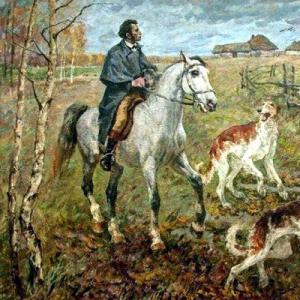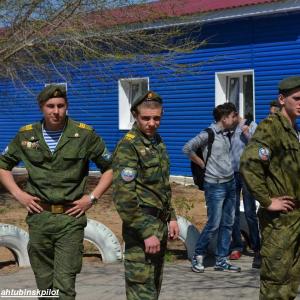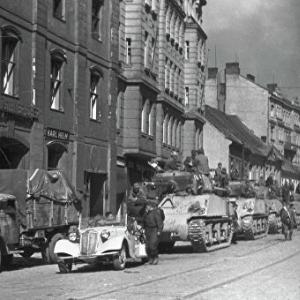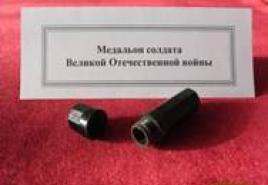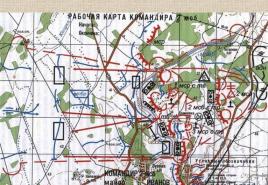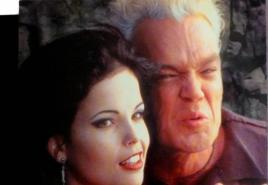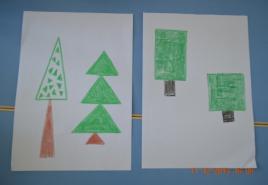Test "nitrogen and its compounds". Test "Nitrogen and its compounds Test on oxygen compounds of nitrogen
OPTION NO. I
Choose the right one answer
1. Indicate the number of electronic levels at the nitrogen atom
A) 1 B) 2 C) 3 D) 4
2. Indicate the number of electrons at the outer level of the nitrogen atom
A) 8 B) 7 C) 5 D) 3
3. The highest and lowest oxidation states of nitrogen in compounds are equal to
A) +5 and -5 B) +3 and -3 C) +3 and -5 D) +5 and -3
4. Bonding in the nitrogen molecule
5. Bonding in the nitrogen molecule
A) covalent non-polar B) metallic
B) covalent polar D) ionic
6. Bonding in the ammonia molecule
B) metal D) ionic
7. Specify a metal that reacts at room temperature with nitrogen
A)LiB)NaV)KG)Ca
8. A solution of ammonia in water can be detected
A) to taste B) by color
B) by smell D) by the presence of sediment
9. Ammonia can exhibit properties
A) only oxidative
B) only restorative
B) and oxidizing and reducing
D) does not have such properties
10.Sum of the coefficients on the left side of the equation for the oxidation of ammonia to nitrogen and water is equal to
A) 4 B) 7 C) 8 D) 9
11. Abbreviated ionic reaction equation NH 4 + + OH - = NH 3 + H 2 O corresponds to the interaction of substances
A)NH 4 Cland Ca (OH) 2 V)NH 4 ClandH 2 O
B)NH 3 andH 2 OG)NH 3 andHCl
12. Make the reaction equation according to the scheme N a + N 2 = ...
A) 5 B) 8 C) 7 D) 6
13. The oxidation state of nitrogen in compounds N 2 O 5 , NH 3 respectively equal to
A) +2 and -3 B) +5 and -3
B) +5 and +3 D) -5 and +3
14.In a nitrogen molecule, the atoms are linked
A) two - and one - communication
B) two - and one - communication
B) two - and one hydrogen bond
D) covalent bonds by donor-acceptor mechanism
15. Which diagram reflects the process of industrial production of nitrogen
A) air V)NH 4 N0 2
B) Ca +HNO 3 (broken)→ G)NH 4 N0 3
Test on the topic “Nitrogen. Ammonia". Chemistry grade 9
OPTION No. 2
Choose the right one answer
1.The same for nitrogen and phosphorus atoms is
A) the charge of the nucleus of the atom B) the number of energy levels
B) relative atomic mass D) number of electrons at the outer level
2. Formula of higher nitric oxide
A)N 2 0 B)N 2 0 3 V)N0 2 G)N 2 0 5
3. Ammonia is recognized
A) a smoldering splinter B)lime water
B) wet litmus testD) by color
4. The sum of the coefficients on the right side of the equation for the oxidation of ammonia to nitrogen and water is
A) 4 B) 7 C) 8 D) 9
5. Indicate the number of electronic levels at the nitrogen atom
A) 2 B) 3 C) 4 D) 5
6. Indicate the number of electrons at the outer level of the nitrogen atom
A) 2 B) 3 C) 4 D) 5
7. Bonding in the ammonia molecule
A) covalent non-polar B) covalent polar
B) metal D) ionic
8. The highest and lowest oxidation states of nitrogen in compounds are equal, respectively
A) +3 and -5 B) +3 and -3 C) +5 and -5 D) +5 and -3
9. Bonding in the nitrogen molecule
A) single B) double C) triple D) polar
10. Bonding in the nitrogen molecule
A) ionic B) metal
B) covalent polar D) covalent non-polar
11. Ammonia is recognized
A) a smoldering splinter B) by colorB) lime waterD) by smell
12. When ammonia burns in air, in addition to water,
A)N 2 B)NOV)NO 2 G)N 2 O
13. Make a reaction equation according to the scheme Mg + N 2 = ... Give your answer as the sum of the coefficients in the reaction equation
A) 5 B) 8 C) 7 D) 6
14. Ammonia is
A) ammonia solution in water B) ammonia solution in alcohol
B) ammonium chloride D) medical alcohol
15. Products catalytic oxidation of ammonia with oxygen
A)N 2 Oand H 2 ABOUT)N 2 andH 2 ABOUT)NOandH 2 O D)NO 2 andH 2 O
Test "Nitrogen and its compounds"
Option 1 1. Strongest Molecule: a) H 2; b) F 2; c) O 2; d) N 2. 2. Coloring of phenolphthalein in ammonia solution: a) crimson; b) green; c) yellow; d) blue. 3. The oxidation state is +3 at the nitrogen atom in the compound: a) NH 4 NO 3; b) NaNO 3; c) NO 2; d) KNO 2. 4. Thermal decomposition of copper (II) nitrate produces:a) copper (II) nitrite and O 2 ; b) nitric oxide (IV) and О 2 ; c) copper (II) oxide, brown gas NO 2 and O 2; d) copper (II) hydroxide, N 2 and O 2. 5. What ion is formed by the donor-acceptor mechanism? a) NH 4 +; b) NO 3 -; c) Cl -; d) SO 4 2–. 6. Indicate strong electrolytes: a) nitric acid; b) nitrous acid; c) an aqueous solution of ammonia; d) ammonium nitrate. 7. Hydrogen is released during the interaction: a) Zn + HNO 3 (dil.); b) Cu + HCl (solution); c) Al + NaOH + H 2 O; d) Zn + H 2 SO 4 (dil.); e) Fe + HNO 3 (conc.). 8. Write the equation for the reaction of zinc with very dilute nitric acid if one of the reaction products is ammonium nitrate. Indicate the coefficient in front of the oxidizing agent. 9.Give names to substances A, B, C. Option 2 1. By displacing water it is impossible to collect: a) nitrogen; b) hydrogen; c) oxygen; d) ammonia. 2. The reagent for the ammonium ion is a solution of: a) potassium sulfate; b) silver nitrate; c) sodium hydroxide; d) barium chloride. 3. With the interaction of НNО 3 (conc.) gas is formed with copper shavings: a) N 2 O; b) NH 3; c) NO 2; d) H 2. 4. Thermal decomposition of sodium nitrate forms: a) sodium oxide, brown gas NO 2, O 2; b) sodium nitrite and O 2; c) sodium, brown gas NO 2, O 2; d) sodium hydroxide, N 2, O 2. 5. Oxidation degree of nitrogen in ammonium sulfate: a) –3; b) –1; c) +1; d) +3. 6. Which of these substances does concentrated HNO react with? 3 under normal conditions? a) NaOH; b) AgCl; c) Al; d) Fe; e) Cu. 7. Specify the number of ions in the abbreviated ionic equation for the interaction of sodium sulfate and silver nitrate: a) 1; b) 2; at 3; d) 4. 8. Write the equation for the interaction of magnesium with dilute nitric acid if one of the reaction products is a simple substance. Indicate the coefficient in front of the oxidizer in the equation. 9. Write the reaction equations for the following transformations:
Give names to substances A, B, C, D.
Answers
Option 1 1 - G; 2 - a; 3 - G; 4 - v; 5 - a; 6 - a, d; 7 - c, d; 8 – 10,


2Ag + + SO 4 2– = Ag 2 SO 4;
8 – 12, 9.A - NO, B - NO 2, C - HNO 3, D - NH 4 NO 3,
Topic: Nitrogen and its compounds.
Choose one or two correct answers.
1. Ion N -3 corresponds to the electronic formula:
1) 1s 2 2s 2 2p 6 3s 2 3p 6;
2) 1s 2 2s 2;
3) 1s 2 2s 2 2p 6;
4) 1s 2 2s 2 2p 3.
- The same for nitrogen and phosphorus atoms is ...
- the charge of the atomic nucleus;
- number of energy levels;
- relative atomic mass;
- the number of electrons at the outer level.
- In a nitrogen molecule, the atoms are linked ...
1) two - and one - link;
2) two - and one - link;
3) two - and one hydrogen bond;
4) covalent bonds by the donor-acceptor mechanism.
4. The oxidation state of nitrogen in compounds N 2 O 5, NH 3 respectively equal to
1) +2 and -3; 3) +5 and -3;
2) +5 and +3; 4) -5 and +3.
5. Nitrogen occurs naturally in the form ... and ...
L) Li 3 N; 2) N 2; 3) KN0 3; 4) NH 3.
- Are the following judgments about the properties of nitrogen correct?
A. Nitrogen is a colorless, odorless and tasteless gas.
B. Nitrogen is lighter than air
1) only A is true; 3) both judgments are correct;
2) only B is true; 4) both judgments are wrong.
- Which diagram reflects the industrial nitrogen production process?
8. The formula of the highest nitric oxide - ...
1) N 2 0; 2) N 2 0 3; 3) N0 2; 4) N 2 0 5.
9. Coefficient before the reducing agent in the reaction equation
calcium with nitrogen ...
1)5; 2)2; 3)3; 4)4.
10 When some metal weighing 2.64 g interacts with nitrogen, a metal nitride weighing 2.92 g is formed. An unknown metal is:
1) aluminum; 3) lithium;
2) strontium; 4) sodium.
11. ... In the scheme of transformations NO ----- X ------- HNO 3 , substance X is
1) N 2; 3) NH 3;
2) N 2 O 5; 4) NO 2.
12. Ammonia is recognized ... and ...:
- a smoldering splinter;
- wet litmus test;
- lime water;
- by smell.
13. Abbreviated ionic reaction equation NH 4 + + OH - = NH 3 + H 2 O corresponds to the interaction of substances
1) NH 4 Cl and Ca (OH) 2;
2) NH 4 Cl and H 2 O;
3) NH 3 and H 2 O;
4) NH 3 and HCl.
14. Products catalyticoxidation of ammonia with oxygen ...
1) N 2 0 and H 2 0;
2) N 2 and H 2 0;
3) NO and H 2 0;
4) N0 2 and H 2 0.
- The sum of the coefficients on the left side of the equation for the oxidation of ammonia to nitrogen and water is ...
- ; 2)7 ; 3)8 ; 4)9.
- The volume of ammonia, which is obtained by the interaction of 56 liters of nitrogen with an excess of hydrogen and a yield of 50%, is equal to
1) 28 l; 2) 14 l; 3) 35 l; 4) 56 liters.
17. Ammonia alcohol is:
1) A solution of ammonia in water;
2) A solution of ammonia in alcohol;
3) ammonium chloride;
4) Medical alcohol.
18. Hydrogen is not released when heating magnesium with a solution ...
1) HC1; 2) H 2 S0 4; 3) HNO 3; 4) H 3 PO 4;
19. In the laboratory, nitric acid is obtained by the reaction:
1) NaNO 3 (TV) + H 2 SO 4 (conc) = NaHSO 4 + HNO 3;
2) N 2 O 5 + H 2 O = 2HNO 3;
3) 4NO 2 + 2H 2 O + O 2 = 4HNO 3;
4) Ba (NO 3) 2 + H 2 SO 4 = BaSO 4 ↓ + 2 HNO 3.
- Nitric acid interacts with ... and ...
1) S0 3; 2) Ag; 3) H 3 P0 4; 4) CuO.
- Free metal is formed by thermal decomposition
l) NaN0 3; 2) Mg (NO 3) 2; 3) NH 4 NO 3; 4) AgN0 3.
- Unlike from a solution of hydrochloric acid, nitric acid interacts with ... and ...
l) CuO; 2) Ag; 3) Cu; 4) Ca (OH) 2 .
23. State the correct judgment: A. Nitric acid is a strong electrolyte. B. Concentrated nitric acid reacts with all metals.
1) only A is true; 2) only B is true;
3) both judgments are correct; 4) both judgments are wrong.
Option 1.
Chemical sign of nitrogen: a) P b) N c) As d) Ne
The nitrogen molecule contains: a) a double bond b) a single bond c) a triple bond
Molecular formula of nitrogen: a) N b) N 2 c) N 3 d) Ne
To the physical properties of nitrogen not applicable : a) gas b) odorless c) poorly soluble in water d) brown.
Nitrogen in compounds cannot show the oxidation state a) +1 b) -3 c) +6 d) +5
Nitrogen does not react with a) metals b) phosphorus c) hydrogen d) oxygen
When nitrogen interacts with hydrogen, a) phosphine is formed b) nitrogen oxide (II) c) methane d) ammonia
When nitrogen interacts with oxygen, a) nitrogen oxide (II) b) nitrogen oxide (I) c) nitrogen oxide (IV) d) nitrogen oxide (V)
Compounds of nitrogen with metals are called a) nitrites b) nitrides c) nitrates d) ammonia.
The oxidation state of nitrogen in ammonia a) -3 b) +5 c) +3 d) +2
Which of the properties not applicable to ammonia: a) gas c) poorly soluble in water c) has a pungent odor d) easily liquefies under pressure
The ammonia solution has a medium: a) acidic b) alkaline c) neutral d) slightly acidic
Ammonia does not interact a) with acids b) with alkalis c) with water d) with oxygen
Combustion of ammonia produces a) nitrogen oxide (II) b) water c) nitrogen d) nitrogen oxide (IV)
During the catalytic oxidation of ammonia, in addition to water, a) nitrogen oxide (II) b) nitrogen oxide (IV) c) nitrogen oxide (III) d) nitrogen oxide (V)
When ammonia interacts with hydrochloric acid, a) ammonia chloride b) ammonium chloride c) ammonium sulfate d) ammonium nitrate
Ammonia in the laboratory can be obtained by the interaction of a) ammonium salt with alkali b) ammonium salt with acid c) hydrogen with nitrogen d) ammonium salt with other salts.
Ammonia is obtained in industry a) ammonium salts with alkali b) ammonium salts with acid c) hydrogen with nitrogen d) ammonium salts with other salts.
can not form salts a) acidic b) medium c) basic
Ammonium salts cannot be obtained a) the interaction of ammonia with acids b) the interaction of an ammonia solution with acids c) the interaction of ammonium salts with acids d) the interaction of ammonium salts with alkali.
What reaction is qualitative for ammonium salts a) interaction with alkali b) interaction with acids c) interaction with other salts d) interaction with water.
A sign of a qualitative reaction to the ammonium ion is a) the release of gas that causes turbidity of lime water b) the release of gas with the smell of ammonia c) the release of a white precipitate d) the release of brown gas.
When ammonium salts are heated, a) the release of water occurs b) decomposition with the release of gases c) evaporation d) a change in their color.
The decomposition of ammonium nitrate produces: a) nitrogen and water b) nitrogen oxide (I) and water c) nitrogen oxide (II) and water d) nitrogen oxide (IV) and water.
Nitrogen does not form oxide with the formula a) NO 2 b) NO 3 c) NO d) N 2 O
Acidic oxide is not a) NO 2 b) N 2 O 3 c) N 2 O 5 d) NO
The non-salt-forming oxide is a) NO 2 b) N 2 O 3 c) N 2 O 5 d) N 2 O
Nitric acid does not include a) liquid b) monobasic c) strong oxidizing agent d) odorless
The oxidation state of nitrogen in nitric acid a) +3 b) +5 c) +1 d) -3
not formed
When nitric acid interacts with metals, a) water b) hydrogen c) nitric oxide d) salt
When concentrated nitric acid interacts with metals in the voltage series after hydrogen, in addition to water and salt,
When diluted nitric acid interacts with copper, in addition to water and salt,
a) nitrogen oxide (II) b) nitrogen oxide (I) c) nitrogen oxide (IV) d) ammonia.
Nitric acid does not react with a) sulfur oxide (IV) b) sodium hydroxide c) barium oxide d) calcium carbonate.
Test on the topic "Nitrogen and its compounds".
Option 2.
Chemical sign of nitrogen: a) N b) Nb c) Ar d) S
The nitrogen molecule contains: a) a hydrogen bond b) a covalent polar bond c) a covalent non-polar bond
Structural formula of nitrogen: a) N = N b) N≡ N c) N- N d): N ::: N:
To the physical properties of nitrogen not applicable : a) gas b) with a pungent odor c) poorly soluble in water d) heavier than air.
In nitrogen air by volume: a) 50% b) 65% c) 78% d) 85%
Nitrogen in compounds cannot show the oxidation state a) -1 b) +3 c) +4 d) +5
Nitrogen at room temperature reacts with a) oxygen b) lithium c) hydrogen d) sodium
When nitrogen interacts with hydrogen, a) hydrogen sulfide b) nitrogen oxide (IV) c) ammonia d) nitrogen oxide (II)
When nitrogen interacts with oxygen, a) nitrogen oxide (II) b) nitrogen oxide (I) c) nitrogen oxide (IV) d) nitrogen oxide (III)
Compounds of nitrogen with metals are called a) nitrates b) nitrites c) nitrides d) ammonium salts.
The oxidation state of nitrogen in ammonia a) +3 b) +4 c) -3 d) +2
Which of the properties not applicable to ammonia: a) gas c) well soluble in water c) odorless d) lighter than air
The ammonia solution has a medium: a) acidic b) neutral c) alkaline d) slightly alkaline
Ammonia does not interact a) with oxygen b) with hydrogen c) with water d) with acids
When ammonia is burning formed a) nitric oxide (V) b) nitric oxide (I) c) nitrogen d) water
During the catalytic oxidation of ammonia, in addition to water, a) nitrogen oxide (V) b) nitrogen oxide (III) c) nitrogen oxide (IV) d) nitrogen oxide (II)
When ammonia interacts with sulfuric acid, a) ammonia chloride b) ammonium chloride c) ammonium sulfate d) ammonium nitrate
Ammonia in the laboratory can be obtained by the interaction of a) ammonium chloride with potassium hydroxide b) ammonium sulfate with hydrochloric acid c) hydrogen with nitrogen d) ammonium salts with other acids.
Ammonia in industry is obtained by the interaction of a) hydrogen with nitrogen b) ammonium chloride with alkali c) ammonium salts with acid d) ammonium salts with other salts.
When interacting with acids, ammonia can not form salts a) basic
b) medium c) sour
Ammonium salts can't get a) interaction of ammonium salts with alkali b) interaction of ammonia solution with alkalis c) interaction of ammonia solution with acids d) interaction of ammonium salts with acids.
You can recognize ammonium salts using a) acid b) alkali c) another salt d) water.
A sign of a qualitative reaction to the ammonium ion is a) gas evolution with the smell of ammonia gas evolution b) gas evolution causing turbidity of lime water c) brown gas evolution d) white precipitate evolution.
When heating ammonium carbonate not happening
a) the release of water b) carbon dioxide c) the release of ammonia d) the release of nitrogen oxide (I).
The decomposition of ammonium nitrite forms:
a) nitrogen and water b) nitrogen oxide (I) and water c) nitrogen oxide (II) and water d) nitrogen oxide (IV) and water.
Nitrogen does not form oxide with the formula a) NO 2 b) N 2 O 5 c) NO d) N 2 O 7
Acidic oxide is not a) NO 2 b) N 2 O 3 c) N 2 O d) N 2 O 5
The non-salt-forming oxide is a) NO b) N 2 O 3 c) N 2 O 5 d) NO 2
Nitric acid does not include a) liquid b) dibasic c) strong oxidizing agent d) oxygen-containing
The oxidation state of nitrogen in nitric acid a) -3 b) +5 c) +4 d) +3
When nitric acid decomposes in the light formed a) water b) oxygen c) ammonia d) nitrogen oxide (IV).
When nitric acid interacts with metals, it does not form
a) nitrogen compound b) salt c) water d) hydrogen
When concentrated nitric acid interacts with silver, in addition to water and salt, a) nitrogen oxide (I) b) nitrogen oxide (IV) c) nitrogen oxide (II) d) ammonia is formed.
When diluted nitric acid interacts with silver, in addition to water and salt,
a) nitrogen oxide (II) b) nitrogen oxide (I) c) nitrogen oxide (IV) d) ammonia.
Nitric acid does not react with a) phosphorus oxide (V) b) sodium oxide c) barium hydroxide d) sodium carbonate.

